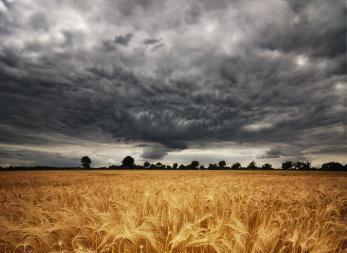Extreme precipitation events dominated the period from March to August 2007 across the world. In the United Kingdom, record rainfall and widespread flooding damaged over 60,000 properties and triggered insured losses estimated at $6 billion. Elsewhere, Pakistan suffered major floods in June, while in late July and early August, the south west monsoon brought the worst floods for more than 30 years to northern India, Bangladesh, Nepal, Bhutan and Myanmar. An estimated 50 million people were affected.
China experienced its worst flooding since 1998, with over 450,000 homes destroyed and 200 million people affected. Initial estimates suggest that economic losses arising from the China floods will be at least $6.9 billion. Other significant flood events occurred in Afghanistan, Argentina, Colombia, Haiti, Indonesia, the Maldives and Sri Lanka.
By contrast, southern and southeastern Europe sweltered in record temperatures that peaked at 49°C in Sicily. Wildfires raged across Greece, Bulgaria, Croatia, Cyprus, the Canary Islands and elsewhere. July 2007 was the worst month for wildfires ever recorded in Europe.
While the Atlantic proved to be hurricane free over the period, Super Cyclone Gonu became the first tropical cyclone to enter the Gulf of Oman, causing major damage as it did so, with economic losses estimated at $4 billion and insured losses in hundreds of millions of dollars. Elsewhere, Tropical Storm Chantal inflicted damage on the Canadian Maritime provinces, Tropical Storm Barbara battered southeast Mexico and Typhoon Pabuk took lives in the Philippines.
Geologically, the period was reasonably quiet. Most notable was a magnitude 6.6 earthquake close to the Japanese city of Niigata, which damaged a nuclear power plant and generated economic losses of around $12.5 billion. Other, smaller earthquakes took lives in China and Tajikistan, while volcanic activity in Colombia and Indonesia required evacuation of nearby populations
Downloads
Disasters Bulletin Part 1
PDF, Size 0.47 mbDisasters Bulletin Part 2
PDF, Size 0.88 mb
Postscript
By Professor Bill McGuire of Benfield - UCL Hazard Research Centre
















